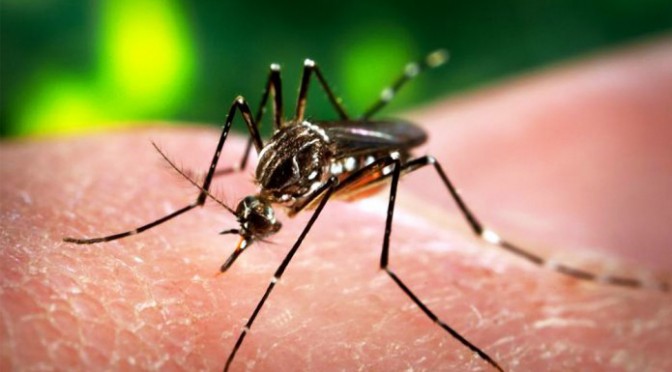Malaria is a disease that has been ever-present in human society for millennia, with evidence of its effects dating back to Ancient Egyptian times. It has had devastating effects globally, particularly in underdeveloped countries where the parasites carrying the disease are common. Find out more about the history of malaria, its origins and current global status.
Malaria: Rising Cases
While it has always had a presence, malaria has been on the rise in certain regions of the world. In Ethiopia in Eastern Africa, over one million cases have been reported in the first half of 2023. This is a considerable rise in reported cases to the 13,136 cases reported over a similar time period in 2022.
On the Filipino island of Palawan, a cluster of 31 malaria cases were reported over a two-month period this year. Patients exhibited key malaria symptoms such as headaches, dizziness, body malaise, fever, and epigastric pain. All cases have recovered since reporting.
There have even been localised cases reported in the US states of Texas and Florida, though US public health officials advise that the risk of transmission remains low.
With that in mind, let’s take a closer look at the disease, its origins, global impact, and modern preventative measures being used worldwide.
Malaria: History & Origins
Malaria is one of the oldest and most pervasive infectious diseases known to humanity. Its origins can be traced back to ancient times, with evidence of the disease found in Egyptian mummies dating back over 4,000 years. The name “malaria” is derived from the Italian words “mal” (bad) and “aria” (air), which referred to the mistaken belief that the disease was caused by foul air in marshy areas.
It was only in the late 19th century that the true cause of malaria was discovered – the transmission of the Plasmodium parasite through the bites of infected female Anopheles mosquitoes. The parasite has four species that can infect humans: Plasmodium falciparum, Plasmodium vivax, Plasmodium malariae, and Plasmodium ovale. Throughout history, malaria has had a significant impact on human societies, affecting the course of wars, hindering economic development, and causing countless deaths.
Malaria in Ireland
Ireland’s history with malaria dates back to ancient times, but the prevalence of the disease fluctuated over the centuries. The condition was endemic in many regions, particularly in swampy areas, and outbreaks were common. Notable historical figures like Oliver Cromwell and Queen Elizabeth I reportedly contracted the disease while in Ireland.
However, advancements in public health and urban planning during the 19th and 20th centuries, such as improved drainage systems and mosquito control measures, significantly reduced the incidence of malaria. By the mid-20th century, malaria was effectively eradicated from Ireland, becoming a disease of the past in the country.
Current Efforts of Prevention Worldwide
Malaria continues to be a global health threat, particularly in tropical and subtropical regions. The World Health Organization (WHO) estimates that there were approximately 229 million cases of malaria and 409,000 malaria-related deaths in 2019. Sub-Saharan Africa bears the highest burden, accounting for over 90% of both cases and deaths.
Despite these challenges, significant progress has been made in the global fight against malaria. Prevention efforts mainly focus on several key strategies:
Insecticide-Treated Nets (ITNs): Distributing ITNs to vulnerable populations, such as pregnant women and children, has been highly effective in reducing malaria transmission. These nets act as a physical barrier against mosquito bites while also being treated with insecticides to kill or repel the mosquitoes.
Indoor Residual Spraying (IRS): IRS involves spraying insecticides on the interior walls of houses and buildings to kill mosquitoes that come into contact with these surfaces. This method helps reduce mosquito populations and malaria transmission.
Diagnosis and Treatment: Early diagnosis and appropriate treatment are crucial for preventing severe cases and deaths. Rapid diagnostic tests allow for quick and accurate detection of the malaria parasite, enabling timely treatment with effective antimalarial drugs.
Vaccines: In recent years, progress has been made in developing malaria vaccines. The most advanced vaccine candidate, known as RTS,S, has shown promise in clinical trials and is being piloted in selected countries.
Research and Innovation: Ongoing research is essential for developing new tools, strategies, and interventions to combat malaria. This includes investigating drug resistance, understanding mosquito behaviour, and exploring genetic modifications to reduce mosquito populations.
Global Partnerships: International organizations, governments, NGOs, and other stakeholders collaborate to pool resources and expertise in the fight against malaria. The WHO’s Global Malaria Program, the Roll Back Malaria Partnership, and the Bill & Melinda Gates Foundation are just a few examples of key players in this collective effort.
Malaria has plagued humanity for millennia, leaving a significant impact on history and public health. While the disease has been eradicated in certain regions, it continues to pose a formidable challenge worldwide. Thanks to concerted efforts in prevention, diagnosis, treatment, and research, progress is being made to reduce the burden of malaria and move closer to the goal of its eventual eradication. However, sustained commitment and continued innovation are crucial to overcoming the obstacles in the fight against this ancient yet persistent foe.
Find out more about steps you can take to reduce the risk of contracting malaria when you travel.

